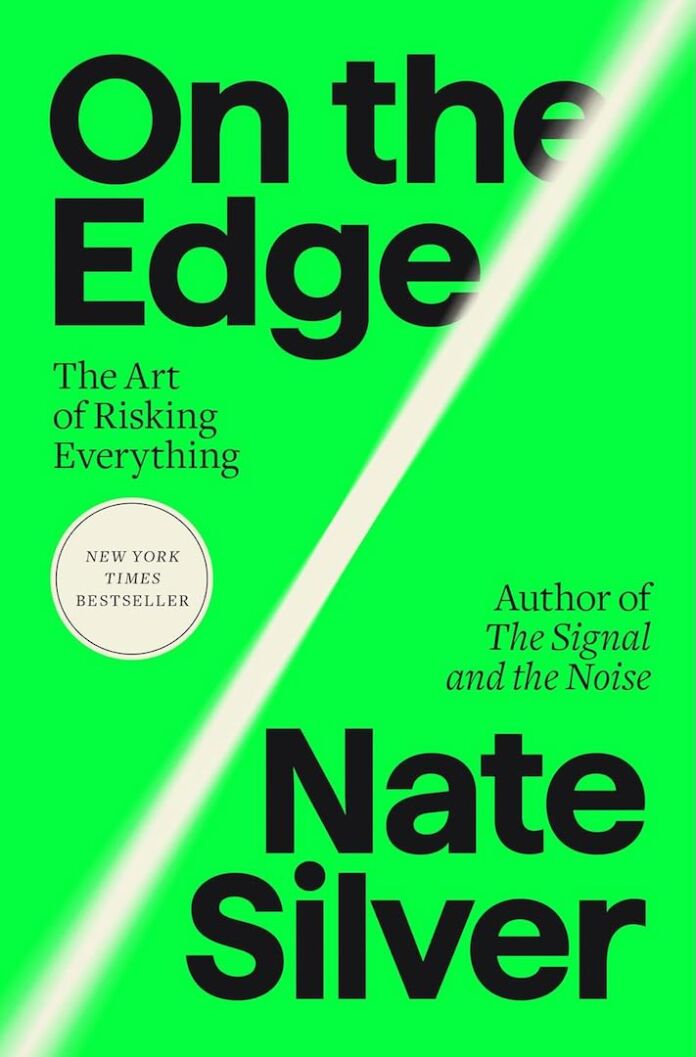In an era where uncertainty seems to be the only constant, Nate Silver’s “On the Edge: The Art of Risking Everything” arrives as a timely exploration of those who have mastered the art of calculated risk-taking. Silver, best known for his political forecasting and his previous bestseller “The Signal and the Noise,” ventures into the heart of what he calls “The River”—a metaphorical ecosystem where high-stakes gamblers, venture capitalists, and technological innovators navigate the turbulent waters of risk and reward.
The River’s Edge: A Comprehensive Analysis
Silver’s writing style remains characteristically sharp and analytical, yet he manages to weave a narrative that’s both accessible and engaging. The book is structured like a journey upstream, beginning in the familiar territory of poker rooms and casinos before ascending to the rarefied air of Silicon Valley boardrooms and cryptocurrency trading floors.
Strengths: Where Silver Shines
Masterful Storytelling
The author excels at bringing complex concepts to life through vivid character portraits. His depiction of figures like Doyle Brunson, the legendary poker player, and Sam Bankman-Fried, the fallen crypto king, are particularly compelling. These aren’t just case studies; they’re windows into the psychology of risk-taking.
Data-Driven Insights
True to his background as a statistician, Silver grounds his observations in hard data. His analysis of venture capital success rates and poker tournament statistics provides concrete evidence for his broader theories about risk management.
Cultural Analysis
The book offers a fascinating examination of what Silver calls the conflict between “The River” and “The Village”—the tension between risk-takers and institutional power structures. This framework provides valuable insight into current technological and economic debates.
Areas for Improvement
Scope vs. Depth
At times, Silver’s ambitious scope – covering everything from poker strategy to artificial intelligence – means some topics receive relatively surface-level treatment. Readers seeking deep dives into specific areas might occasionally feel shortchanged.
Tech Sector Focus
While the attention paid to Silicon Valley and cryptocurrency is timely, some readers might find the later chapters too heavily weighted toward these sectors at the expense of other risk-taking domains.
Key Insights and Takeaways
The Thirteen Habits
One of the book’s most valuable contributions is Silver’s identification of thirteen habits shared by successful risk-takers. These include:
- Maintaining cool under pressure
- Strategic empathy
- Process-oriented thinking
- Selective attention to detail
- Adaptability
The Fox and the Hedgehog
Silver’s application of Isaiah Berlin’s concept of foxes (who know many things) and hedgehogs (who know one big thing) to different types of risk-takers is particularly illuminating, especially in his analysis of venture capitalists versus founders.
Comparative Context
Unlike his previous work “The Signal and the Noise,” which focused primarily on prediction and probability, “On the Edge” takes a broader view of risk-taking behavior. It shares some DNA with Michael Lewis’s “The Big Short” and Annie Duke’s “Thinking in Bets,” but Silver’s approach is unique in its comprehensive examination of risk-taking across multiple domains.
Writing Style and Accessibility
Silver maintains his signature blend of statistical rigor and narrative flair throughout the book. His use of extended metaphors (particularly The River) helps readers grasp complex concepts without oversimplifying them. The prose is clear and engaging, though occasionally dense with technical detail.
Impact and Relevance
In our current economic and technological climate, Silver’s insights feel particularly relevant. His examination of the cryptocurrency bubble and the rise of AI provides valuable context for understanding contemporary risks and opportunities.
Critical Assessment
The book’s greatest strength lies in its ability to connect seemingly disparate worlds—from poker tables to venture capital firms—through the common thread of risk management. Silver demonstrates convincingly that similar principles govern successful risk-taking across these various domains.
However, some readers might question whether the lessons from professional gamblers and tech entrepreneurs can truly be applied to everyday decision-making. Silver addresses this concern, but not always conclusively.
Final Verdict
“On the Edge” by Nate Silver is a compelling and timely examination of risk-taking in the modern world. While it occasionally sacrifices depth for breadth, the book succeeds in its primary goal: illuminating the mindset and methods of those who make their living on the edge of uncertainty.
The Good:
- Rich in real-world examples and data
- Engaging narrative style
- Timely analysis of contemporary risk-taking
- Valuable insights into decision-making
The Not-So-Good:
- Some topics could benefit from deeper exploration
- Tech sector focus might not appeal to all readers
- Complex concepts sometimes require careful re-reading
Who Should Read This Book
This book is essential reading for:
- Entrepreneurs and business leaders
- Investors and financial professionals
- Technology industry participants
- Anyone interested in decision-making under uncertainty
Conclusion
“On the Edge” by Nate Silver stands as a valuable contribution to our understanding of risk-taking in the modern world. While not perfect, it offers crucial insights for navigating an increasingly uncertain future. Silver has once again demonstrated his ability to illuminate complex subjects through the lens of data and human behavior, producing a work that will likely influence discussions about risk and decision-making for years to come.





